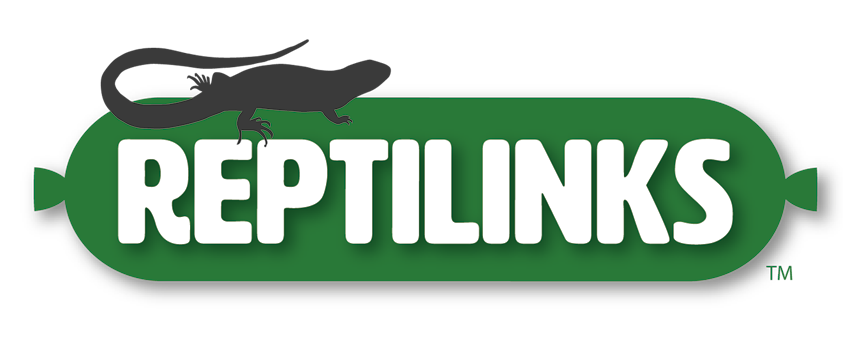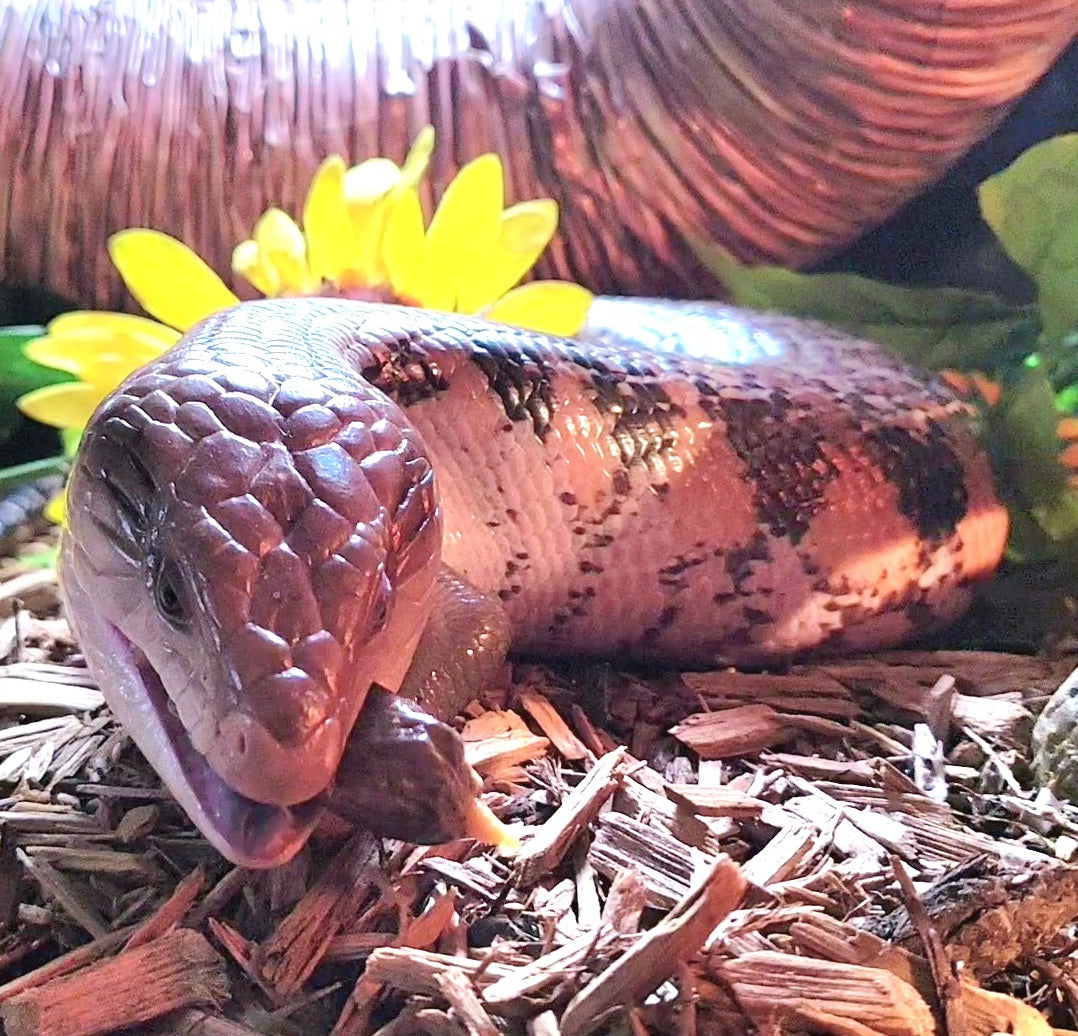Pet reptiles come in all shapes and sizes, but the most common choices tend to be those that are easy to pick up, interesting to watch, and simple to feed. Enter the blue tongue skink, a popular choice for reptile enthusiasts the world over. These long, robust lizards boast forgiving care requirements and a wide variety of potential food and enrichment options, making them approachable for beginners. Many also tolerate human interaction well.
However, owners who want to have a happy blue tongue skink need to be sure that they’re taking care of their pet properly, and some common missteps can leave your bluey sick and failing to thrive. Here’s what you should know about the basics of caring for a blue tongue skink, from their enclosure to the foods they eat.
Understanding Your Bluey (BTS)
The term “blue tongue skink” or BTS is actually an overarching umbrella underneath which multiple species of blueys exist. Northern blue tongue skinks are the most popular variety in terms of what people shop for, but in reality, many owners find unlabeled blueys in pet stores. Here, they’re told that their lizard is a northern, when in reality, they have bought an Indonesian variety of blue tongue. Indonesian blue tongue skinks are just as enjoyable as pets, but they have different care requirements than their northern counterparts. This means that the first step in making sure you’re caring for a blue tongue skink the right way is to identify which type you have.
Skink species often have overlapping characteristics in their patterns, so check pictures to identify the exact subspecies in your care. In general, if you have a blue tongue skink with black markings on its legs, you have one of a variety of Indonesian subspecies such as Meraukes (known for their orange bellies), Halmaheras (which are red or gray), or classic Indonesians (which can be so yellow that they almost appear green). Indos like these require higher humidity in their enclosures.
On the other end of the spectrum, Australian species (including the northern blue tongue skink) are typically tan-colored and will not usually have black limbs. Within the pet trade, Australian blueys besides the northern are rare, because these skinks cannot be exported from Australia. Northern blue tongues have lower humidity requirements than their Indonesian cousins, which will be discussed below.
Basic Care Requirements for Blue Tongue Skinks
Blue tongue skinks are substantial lizards despite their beginner friendliness. They can grow in excess of 2 feet long, and even though their legs seem far too small for their bodies, they can be very active animals. Their enclosure should reflect this, with a focus on floor space more than verticality. A 4’x2’x2’ enclosure is a good minimum size, though your bluey will appreciate every extra inch you provide. One effective way to create more space is to add enrichment, such as small shelves or cork half-rounds. This provides both floor space underneath as well as a second layer with more square footage, plus the opportunity for mental stimulation and exercise.
Humidity
The appropriate humidity will depend on the type of blue tongue skink that you have. Indonesian varieties benefit from humidity in the 70% to 80% range because their natural environment is moist. Failure to keep humidity high can result in stuck shed, which may constrict toes and cause them to fall off. Your bluey could also get respiratory infections from the dry air. Northerns, on the other hand, come from the hot brushlands of Australia, where humidity is closer to 30% to 50%. They will thrive at these lower moisture levels, though a moist hide is still useful for them to use when they’d like.
Temperatures and Lighting
As for temperatures, blue tongue skinks thrive best in temperatures ranging from 75 degrees on the cool end to 85 on the warm end. At night, these temperatures may dip, but it’s best not to let them fall past 70 degrees Fahrenheit. The basking spot should be large enough that the lizard can choose the section that is right for their needs; aim for around 115 degrees at its warmest point, with the option to bask in an area as low as the 90s. The easiest way to accomplish this is with a piece of stone kitchen tile or a large, flat rock underneath a flood lamp, because the stone basking rock will release heat into the lizard’s belly. Avoid using spot lights rather than flood lights, because spot lights concentrate the heat so tightly that they may burn your bluey. Also avoid using heat rocks, which can become damaged and get hotter than they are supposed to, causing burns and fire hazards.
UV light is important for blue tongue skinks, because both Indonesian and Australian species spend a lot of time in the sun. ZooMed’s high-output T5 10.0 UVB bulb is a great choice, because it provides the natural light that your lizard needs in order to support its bones and vital organs. It’s best to put the UV bulb on the same side as the basking light, because the heat from basking helps the lizard to synthesize the vitamin D that it absorbs from the UV bulb.
The days are often long where blue tongue skinks live, so a daily cycle of 12 hours on, 12 hours off aligns with their natural rhythms.
Substrate and Décor
Blue tongue skinks are natural burrowers, so choosing a substrate that enables this behavior is a good way to keep them happy, make them feel secure, and give them exercise. Many people use a mixture of topsoil, sphagnum/peat moss, and cypress mulch with good results. Indonesian skinks benefit from a greater ratio of sphagnum to the other elements of their substrate because sphagnum moss locks in moisture for their humidity needs. Aspen is not recommended, because even northerns with their lower humidity requirements will tend to dry out on aspen, and their scales may become brittle and scratchy. Spot clean the substrate as necessary and mix in a few cups of water whenever it starts to dry out.
In terms of enrichment and décor, it is helpful to include some rough stones or other coarse materials onto which your bluey can climb. This helps to file their nails down naturally and gives them grip when exploring. Tunnels, cork half and whole rounds, flower pots, and branches are all good options for a blue tongue skink. Avoid stones small enough to be eaten, and if you choose to use artificial plants, check on them regularly to make sure that they are not being mistaken for a snack. Even unlikely items like wine racks or extendable gutters make great play items for blue tongue skinks.
What to Avoid
A blue tongue skink’s arms are short and not suited for extensive climbing (though they will try!), so remember that any decorations should stay fairly low to the ground. Otherwise, your bluey might fall while climbing and injure themselves. Be especially vigilant about placing tall structures near stones and other hard objects in the enclosure, where the bluey could fall onto a hard surface.
Additionally, blue tongue skinks have a parietal eye (also called a pineal eye or third eye) in the center of their forehead. This functional eye assists them with seeing shadows and objects moving above them, such as predators. Avoid reaching from above to pick up your skink or covering their third eye, as this can trigger their prey response and cause unnecessary stress.
Feeding a Blue Tongue Skink
Blue tongue skinks are omnivores. This means that they eat a wide variety of items, from bugs and small animals to fruits and vegetation. Because blueys are so versatile in their dietary needs, feeding them can be an exciting and fun part of keeping them. Bugs like dubia roaches, discoid roaches, crickets, and black soldier fly larvae are all excellent choices for insects; be sure to gutload and dust bugs for the most nutritious results.
Almost all Reptilinks products are suitable for blue tongues as well. While they do not naturally encounter fish or crustaceans as part of their native diets, any mixture of meat, fruits, veggies, and bugs will serve them well. Reptilinks’ rabbit and insect links are a good choice, as are the standard omnivore blend, which was specifically built with blue tongue skinks in mind. A fully grown northern bluey is large enough to take a 16-20g link, but those not yet at their adult size (as well as some species of Indonesians that mature at under two feet) will do better with the 8-12g Reptilinks. For a more in-depth breakdown of the specific fruits, vegetables, and nutrients that help blue tongue skinks to thrive, check out this deep dive.
Give Your Skink the Care It Needs
Blue tongue skinks are rewarding and often sociable pets that are easier to care for than many other types of reptiles. Enrichment alongside a properly crafted enclosure will keep your bluey happy for years to come—and with a lifespan of 20 years or more, your scaly friend could be here to stay for a while. Get creative with the wide variety of things you can feed them to keep their nutrition balanced as well. Whether that’s offering a new fruit every week or providing an assortment of Reptilinks, a balanced diet and a properly calibrated enclosure will keep your bluey mentally stimulated and well fed.

